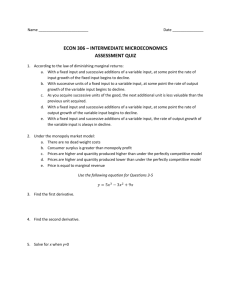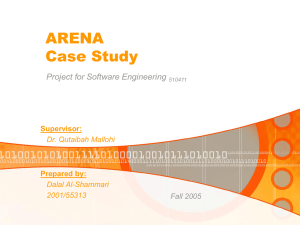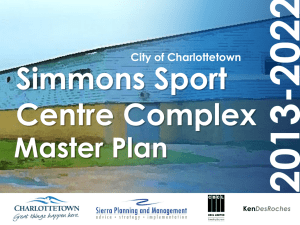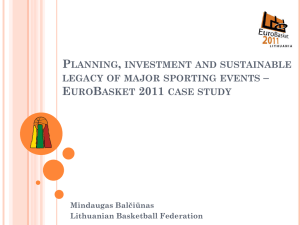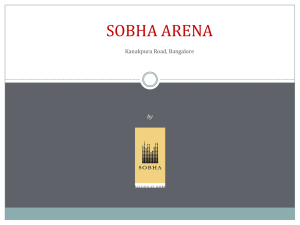The Successive Principle
advertisement
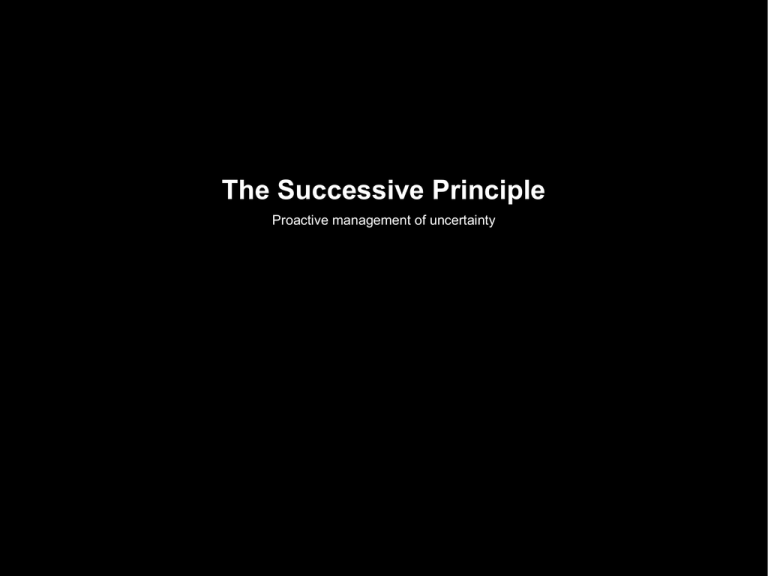
The Successive Principle Proactive management of uncertainty Introduction Procedure Example Introduction As you surely know, it happens that the budget for projects will be more then planned. It’s always many moments and in bigger projects a lot of unique solutions for the projects. Which add up in difficulty to determining an accurate budget. Successive principle is used to reduce the uncertainty, by finding the most critical elements. History First used as a tool for fast and early estimating and scheduling in the construction industry Developed into a proactive management instrument used to efficiently handle uncertainty in the decision making process The principle was developed through research by Steen Lichtenberg in 1970 and then furthermore through a research group including researchers from Stanford, MIT as well as universities in UK, Sweden and Norway Successive Since 1970 the method has been used with successes in a wide range of projects through a varying type of areas such as the Construction, Event and Telecom business For over 25 years and over 300 analysed cases there hasn’t been any negative feedback! ...according to Steen Lichtenberg! Example Lillehammer Olympic Games Original budget $230-385 million Realistic cost identified by use of the successive principle $1230 Million Budget after project was reorganised $800 million Final building cost $800 million Ericsson first mobile phone Successive principle used in the decision making process The idea of a cell-phone was not a high priority item for Ericsson The successive principle revealed otherwise. The phone became Ericsson’s greatest commercial success ever! Procedure Step A Establish a suitable analysis group The group should consist of experts from the major key areas in the project. Both young and old who are specialists and generalists. Step B Clarify the goals and objectives, as well as any form preconditions The team will have a prepared draft who will be discussed and do adjustments until it’s fully understandable. Step C Identify all issues of potential importance Each person in the group will make their own list of key words of issues. By this brainstorming the team will usually identify 50- 100 issues. It’s important not to only think about the technical issues! Step D Organise the issues into discrete groups, and define for each group a base case assumption and how it could change for better or for worse By grouping issues together into statistically independent groups, often 8-12. Step E Quantify all uncertain elements using triple estimates and good evaluation techniques By calculating with triple estimate technique: (min) + (3 x Norm) + max /5 Step F Calculate a provisional overall result and draw up a top ten list of the most critical items or activities Step G Specify the most critical elements in successive steps, guided by the current top ten list The top ten list is broken down and are evaluated to see which part needed more attention. Step H Once a satisfactory result has been arrived at, complete the analysis work with a suggested action plan When the team have done a couple of cycles of step G, usually 8 – 12 cycles the group completes the analysis with a suitable action plan. Case Oslo spektrum Arena The design concept Norway's capital Oslo needed a new multi purpose arena that also could serve as a landmark for the city. The winning proposal in the architectural competition that was held for the arena was at first estimated at £28 million. A unique multi-purpose arena The arena should have a popular appeal and be a monument in the city and function at a multipurpose arena for event such as congresses, concerts, exhibitions and artists. Funding the project The city council secured the funding for the project and 1995 decided to proceed with the construction. The appointed consultants developed the concept to meet all the needs of all events that the venue should be used for, with a high mechanisation that allowed for short lead times between events and small permanent staff. Local use of the successive principle The appointed project manager initiated a a two day risk analysis session using the successive principle to evaluate the risks and the uncertainty and to realistically estimate the total cost of the arena. The further development of the concept and a the result of a first optimistic budget had now raised the estimated cost for the arena from the first £28m up to £68m The objective of the analysis: The main target for the analysis of the project was to: 1. Identify the final project costs and related safety margin for the re-designed project. 2. Rank and find the major sources of uncertainty 3. Support the team building process and creativity Re-Design and Re-analysis This was of course un-acceptable which lead to a re-design and a re-analysis and that the client had to plan for additional funding. The new target budget was, after a review of the design and functional requirements, set to £48 million. Scope of budget The scope includes all projects costs exclusive of loan charges and other finance servicing costs. Major pre-conditions The project is allowed to proceed with the planned support from the major interested parties without any disagreements. Normal problems and side effects involving the many interested parties are included with a few exceptions Major accidents, disasters or similar force major incidents are not included and has to be analysed separately Basic facts The project had extremely difficult foundation engineering and access conditions. The façade with mosaic and allot of advanced technology had to be taken into account. Planned milestones From the analysis period: one and a half year to construction start and a building period of two and half year. Which is a tight schedule for such a complex project as this one was. Including All design and construction costs as well as all supplies necessary for the future operation period All price changes which are distinct form inflation generally All normal types of problem as well as the use of new and improved techniques and innovations The indirect effect of expected minor changes in the program, as well as in the design Excluding Major changes in functional or political requirements Additional “safety reserves” Force majeure events Capital charges The analysis procedure The official project board ordered the use of an analysis based on the successive principle. The analysis was performed by a a multi disciplinary group of key personal in the project and was supported by a few external construction experts. The group work was also guided by two experienced facilitators. Except from some preparation work and the final report the analysis was conducted during two full day meetings. Estimate calculation Calculation of mean value with triple estimate: Example inner walls 0,45+(3x0,50)+0,7/5 = 0,53 Top 10 list Statistical S-curve Result and conclusion The result was a mean value of 42M£ and a standard deviation 4.84M£. With a reserved margin from budget with 6M£. Overall the physical items had been broken down effectively and further more would only reduce the variance by a few cents. These recommendations were followed and accepted for the project. Project was completed 4 month before the target date with a official cost of 42 M£. tack! Further reading www.lichtenberg.org Proactive management of uncertainty using the successive priciple, S. Lichtenberg (2000 )
